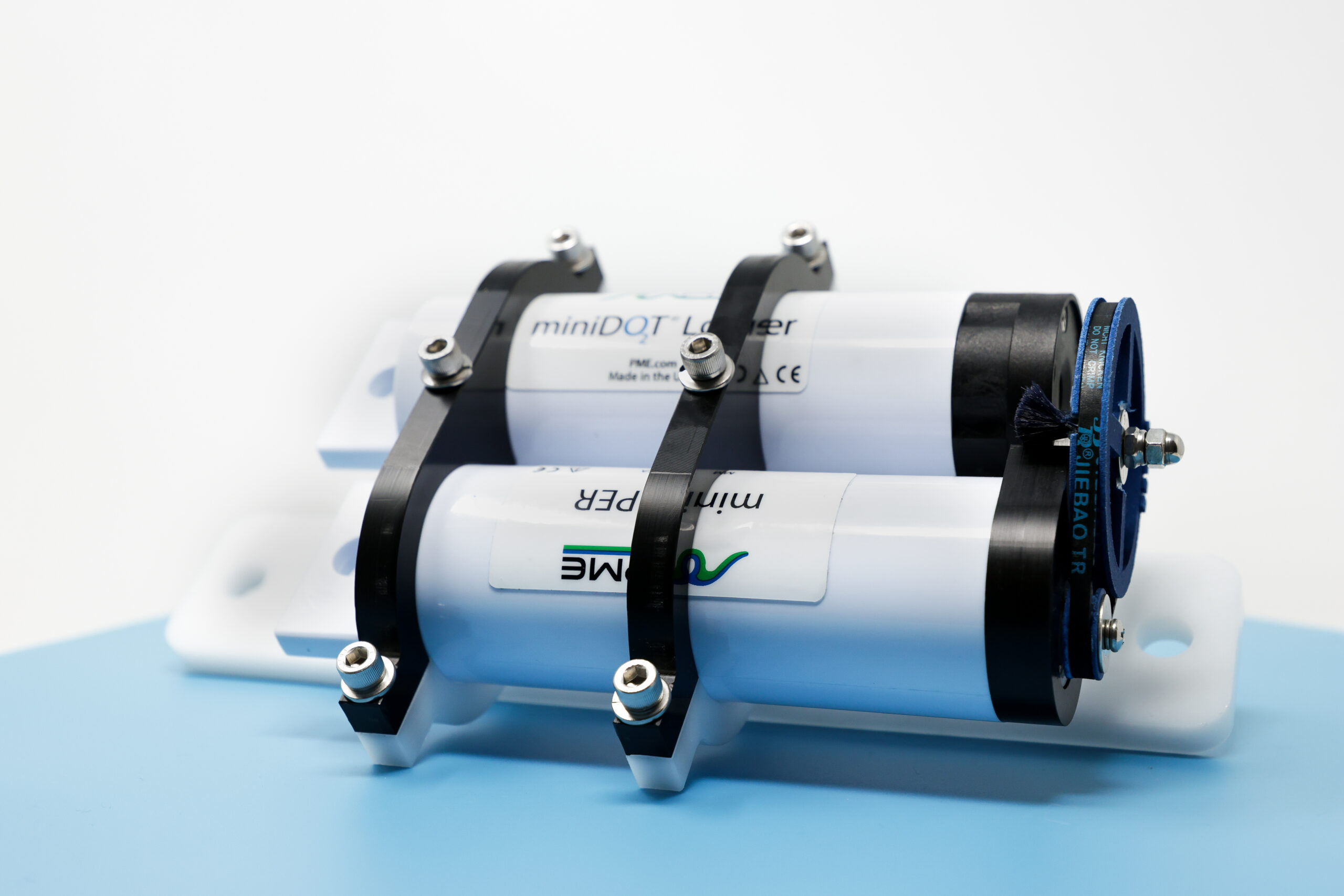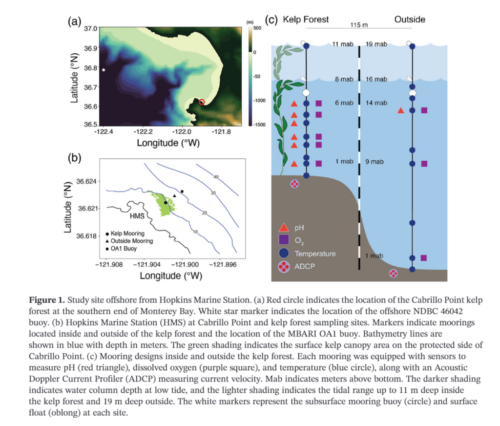
miniDOT® and miniPAR Loggers Used to Measure Arctic Lake Metabolisms
July 22, 2021
miniDOT® Loggers Help Determine if Beaver Ponds are Nitrogen Sinks
September 28, 2021Can Kelp Forests be Used to Reduce Ocean Acidification?
Project Details
- PRODUCT(S): miniDOT® Logger, miniPAR Logger, miniWIPER for miniPAR Logger
- APPLICATION: Coastal / Ocean
- PARAMETER: Dissolved Oxygen, PAR, Temperature
- LOCATION: Monterey Bay, CA
- ORGANIZATION: National Science Foundation
- RECOGNITION: Heidi Hirsh

Case Study Description
Kelp forests could help mitigate some of the effects of ocean acidification. During photosynthesis, the kelp absorbs excess carbon dioxide (CO2) from the surrounding waters and converts it into dissolved oxygen. In order to understand exactly how effective kelp can be at reversing ocean acidification, a team of researchers deployed an array of sensors off the coast of Monterey Bay, California.
Kelp Forests
Greenhouse gas emissions and other human-made pollution cause the quantity of dissolved CO2 in the oceans to increase. This leads to higher acidity levels in the oceans, also known as ocean acidification. Lower pH (higher acidity) threatens the health and well-being of many marine ecosystems.
The research team wanted to see if kelp forests could serve as a natural way to slow down ocean acidification and protect those marine ecosystems. They chose a variety of sensors to measure pH, dissolved oxygen, and temperature both inside and outside of a kelp forest over a period of about four months.
Equipment and Measurements
The sensors they deployed included PME’s miniDOT® Logger, miniPAR Logger, and the miniWIPER for the miniPAR.

The team set the loggers up on two moorings, deployed for about 4 months – one inside the kelp forest and one outside its boundaries. Each mooring included three miniDOT Loggers for measuring dissolved oxygen (5 minute sampling frequency), one miniPAR Logger for measuring diffused sunlight through the water (1 minute sampling frequency), three SBE 56 temperature sensors for recording temperature and time (1 minute sampling frequency), two HOBO Pro v2 temperature loggers for recording temperature nearer to the surface (1 minute sampling frequency), and one HOBO U20L pressure sensor to measure water pressure (1 minute sampling frequency). Each miniPAR Logger was also paired with a miniWIPER which was set to wipe the sensors every six hours to prevent biofouling. The moorings also included a complex setup of custom-built pH sensors and loggers.
A separate miniDOT was deployed at surface level in the kelp forest for two weeks to provide dissolved oxygen and temperature data that could be used to approximate the pH level at the surface.
Conclusions
The study found that dissolved oxygen, temperature, and pH both inside and outside of the kelp forest were highly correlated, generally decreasing as you go deeper into the water column. They found that the kelp forest was most effective at reversing ocean acidification at the surface, where most of the kelp leaves are. The deeper you go, the closer the measurements came to those from outside the kelp forest. This means that kelp forests could be used to mitigate acidification at the surface level but are ineffective in deeper waters.
Product Description
The miniDOT® Logger is a completely submersible instrument that logs dissolved oxygen and temperature measurements. The oxygen sensor is an optode that measures dissolved oxygen concentration in water through a fluorescence method. Data are recorded to an internal SD card. Operation of the miniDOT® Logger such as setting the time and sample interval can be accomplished via the USB cable.
The miniPAR logger is a portable, submersible instrument for measuring diffused sunlight through water, or PAR (Photosynthetically Active Radiation). The miniPAR also contains a tilt sensor to ensure proper orientation, as well as a temperature sensor. Data are recorded on an internal SD card. The miniPAR is powered by 2 AA batteries and can be fitted with an anti-fouling miniWIPER to protect long-term data accuracy.
The miniWIPER is a self-contained, completely submersible, wiping device that can be used with a variety of sensors. It can be programmed to wipe at various intervals, and is powered from two AA Lithium batteries. A small brush rotates over the sensor in order to perform a complete wipe of the sensor surface, and then rests away from the sensor to allow for accurate and continuous monitoring. The wiper is used as an anti-fouling device and may reduce the growth of various organisms on the sensor.

